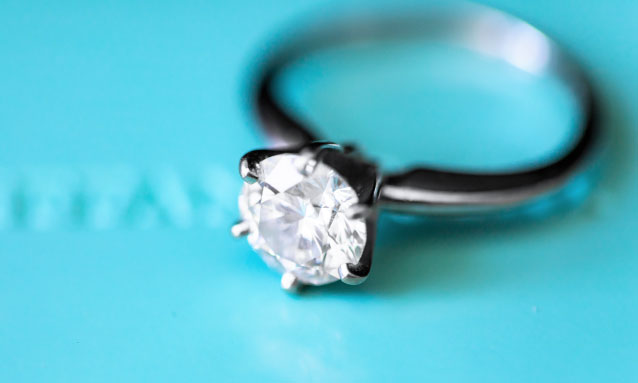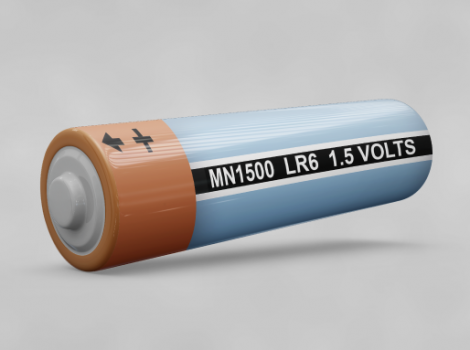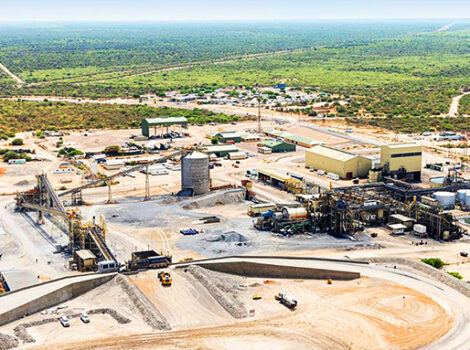
A new crop of jewellery makers using lab-grown and recycled diamonds, as well as recycled metals, appeal to millennials and other customers who like knowing exactly where their purchases come from. Could the trend foretell a permanent shift?
When Camille Martin-Thomsen started shopping for her engagement ring with her then-fiancé, she found the process wasn’t as straightforward as she had hoped. The couple, who split their time between Brooklyn and Copenhagen, looked at rings from luxury jewellery houses in both the U.S. and Denmark. Craft was important to Martin-Thomsen, 45, an architect and assistant dean and professor, as were the ethics behind the ring.
“I was really frustrated with how vague people sometimes were about their procurement process with diamonds,” she says.
“I just couldn’t live with knowing that for me to have beautiful objects, I was going to potentially be harming other people or harming the earth.”
They started researching lab-created diamonds, learning man-made diamonds are chemically identical to those that are mined from the earth. Both have the same carbon chemistry and crystal structure. (They also get assigned the same grades as mined diamonds for carat, cut, clarity and colour.) When Martin-Thomsen and her now-husband saw the prices for lab-grown diamonds were significantly lower than mined diamonds, the choice became a no-brainer. Settings at New York City-based Frank Darling start at $690, and non-custom rings start at $1,490 for a half-carat baguette solitaire and go up to $10,370. (Cartier’s Solitaire 1895 engagement ring is available with a mined diamond in different carats and clarities; a yellow gold version with a 0.52 carat and VS1 clarity diamond costs $6,050, for example.) She loved the settings offered from Frank Darling so much, the couple ended up buying two engagement rings from the company.
Recently, a new crop of primarily online, direct-to-consumer jewellery brands offering engagement rings with lab-grown diamonds has emerged, challenging the traditional notion that the most treasured pieces of jewellery should have stones that come from the earth. Some also use recycled diamonds, which can refer to both antique stones themselves, as well as those that are recut into a modern shape. Unlike lab-grown diamonds, recycled stones usually cost the same as their mined counterparts, but jewellery makers and their customers like them because of their smaller environmental footprint.
In addition to Frank Darling, brands in the market include New York-based C1V1L, Ceremony in Los Angeles and London-based Kimaï, which counts Meghan Markle as a fan. Private equity firms like Huron Capital, which invested in WD Lsab Grown Diamonds in Washington D.C, are betting on the trend.
And celebrities are too: Leonardo DiCaprio invested in San Francisco-based Diamond Foundry when the company raised over $100 million in 2015.
The lab-grown process uses a tiny diamond, called a diamond seed (which is sometimes from a mined diamond and sometimes from a lab-grown one), and one of two techniques to form a new diamond. The two processes used to create them—either high pressure-high temperature or chemical vapour deposition—replicate the conditions that create diamonds underground, but at a much faster rate. (Natural diamonds are considered a finite resource because of the limited supply close enough to the earth’s surface to access.) Growing a one-carat diamond takes seven to ten days, while a three-carat diamond requires about a month. After, they’re cut into traditional shapes such as cushion, oval and round.
To address ethical concerns that mined diamonds can finance violence by rebel movements, most mining companies certify their diamonds with the Kimberley Process, which came from a United Nations General Assembly resolution in 2000 to create an international standard for rough diamonds to ensure they’re conflict-free. Critics of the certification say by only focusing on conflict diamonds, it skirts other forms of worker exploitation, including child labour and fair pay, and that its tracking stops after a stone is cut and polished. Some jewellery companies implement their own standards in addition to the Kimberley Process, like the De Beers Group, which created its own best practice principles. Those sets of standards include additional human rights and labour regulations, as well as using their own tracking programs to oversee their diamonds until they reach their stores.
Blakely Thornton, 34, launched his jewellery company C1V1L in 2019 with a signature design for everyday wear—necklaces and cuffs made from gold and silver mesh. Wanting to expand into engagement rings and other custom fine-jewellery pieces, he ended up partnering with a lab-grown diamond supplier.
“Once customers understand that lab-grown is not cubic zirconia… I look at lab-grown as the Tesla of luxury jewellery,” says Thornton. “People who might buy a Mercedes are thinking, I don’t want to have a V12 engine that’s going to make [life] worse for my children.”
Understanding the exact environmental impact of lab-grown versus natural diamonds isn’t entirely clear. A BBC Future Planet report from earlier this year tried to assess whether lab-grown processes are cleaner than mining without arriving at a definitive conclusion, citing a lack of transparency that makes it hard to get accurate data on the carbon footprint of each. A 2014 analysis by the consulting firm Frost & Sullivan, for example, found that mined diamonds require more than twice as much energy as those grown in a lab, which is still a significant amount of energy.
The murkiness is part of the reason why Jess Hannah, 29, and Chelsea Nicholson, 31, created their ring company, Ceremony, that uses only recycled diamonds and gold. (The founders don’t actually use the word “engagement ring” because they think it’s an outdated concept for some of their customers.) Ceremony’s clean, modern designs—many of which are designed to be unisex—echo those of the fine jewellery (and nail polish) line, J. Hannah, that co-founder Hannah is best-known for.
“[Each diamond we use] is already in the supply chain,” says Nicholson. “And so that is something that we feel we have control over.”
Beginning in the 1930s, the diamond company De Beers launched a marketing campaign that would make diamonds synonymous with engagement rings: giving diamonds to movie stars for their proposals, placing them in society publications and even bringing lecturers to high schools to talk about diamonds. In the 1940s, it launched its now-famous “A Diamond Is Forever” campaign. The company has invested in lab-grown diamond technology, primarily because it wants to designate lab-grown diamonds as a component of casual jewellery, everyday pieces that aren’t necessarily thought of as an investment. Its production group, Element Six, has focused on lab-grown diamonds since the late 1950s, and a consumer-facing company, Lightbox Jewellery, was launched in 2018 and sells pieces with blue and pink lab-grown diamonds in addition to white. Speaking about why De Beers started Lightbox, the group’s executive vice-president of consumer and brands Stephen Lussier says the group was concerned that marketing for lab-grown diamonds wasn’t differentiating them enough from their mined counterparts.
Jessica Warch, 27, and Sidney Neuhaus, also 27, grew up in families in Antwerp’s diamond industry. In 2018, they launched their own lab-grown diamond company, Kimaï, with fashion jewellery: ear cuffs, initial necklaces and ear climbers, one of which Meghan Markle wore last year. Increasingly, though, customers were coming to them for bespoke engagement rings, and now they’re working on their own collection.
“Our generation cares more and more about where the things we are buying come from,” the co-founders wrote in an email.
“They want traceability, they want sustainable packaging and they want to know that the people involved in making their jewellery are being paid and worked fairly.”
Some younger buyers don’t want all the preciousness that’s usually involved with buying an engagement ring; they find it intimidating and impersonal. The website of Frank Darling, the brand where architect Martin-Thomsen found her ring, is branded with playful art and blue font and makes ring shopping less of a momentous event. Customers scroll through their setting choices, select a material—either 18K yellow, white or rose gold, or platinum—their ring size and whether they’d like lab-grown or recycled diamonds. If they choose to buy one of the setting-only rings, they can then search through the company’s diamond database to see stone options. Customers are also able to opt for a customised ring as well as to start with a home try-on kit that includes four styles of replica rings.
“It’s a category most people have never shopped before, and walking into a jewellery store is intimidating,” says co-founder and CEO Kegan Fisher, 34, who launched the company with her husband Jeff Smith, 38, in 2019.
“In your home, where it’s comfortable, nobody’s looking at you and you can take as many photos as you want. It’s low pressure.”
And for millennials, notorious for prioritising experiences over things, the price tag might be the biggest selling point of all.
Fisher says, “You could spend twice as much money for the benefit of [the diamond] being dug out of the ground, or you could not do that and you could go on a nicer honeymoon.”
Corrections & Amplifications
Jessica Warch and Sidney Neuhaus are both 27 and the company they founded, Kimaï, is based in London, with manufacturing taking place in Antwerp. An earlier version of this article incorrectly said they were 26 and Kimaï was based in Antwerp. Additionally, the story has been updated to include more in-depth descriptions of conflict-free diamonds, the De Beers Group’s standards and Cartier’s offerings. (Corrected and updated on September 25, 2020.)



